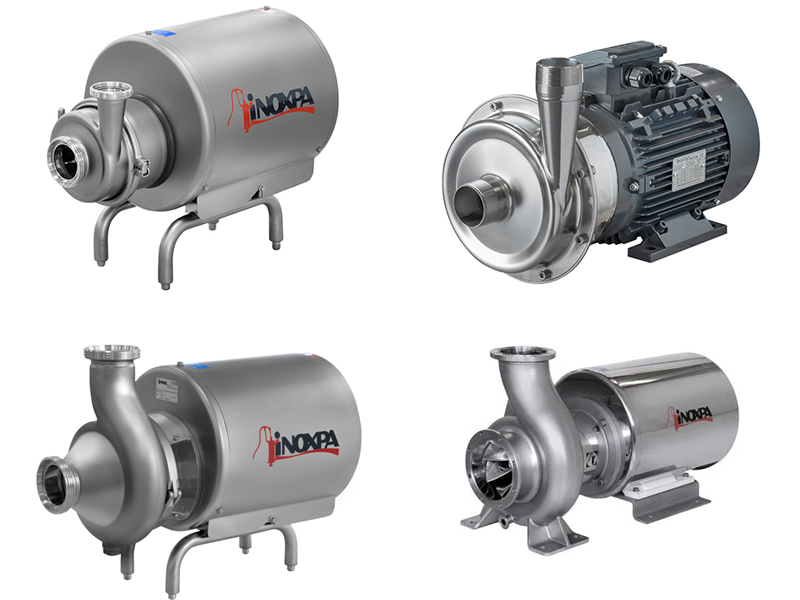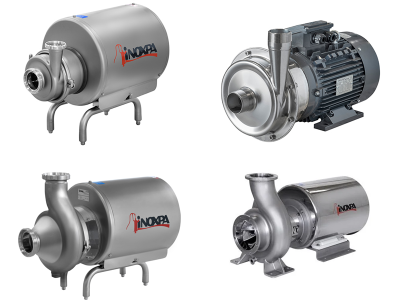
Centrifugal Pumps
What is a Centrifugal Pump and What Does It Do?
A centrifugal pump is a type of pump used to provide the flow of liquids and to transport these liquids to a certain height or distance. Basically, these pumps move the liquid using centrifugal force. Thanks to a rotating component (wheel or impeller) inside, the liquid is pulled towards the center and thrown outward at high speed. This movement increases the kinetic energy of the liquid, so the liquid can be transported to the desired height or distance.
Centrifugal pumps are widely used in various industries and applications. They are frequently preferred in areas such as water supply, sewage systems, chemical processing, oil and gas industry. They are also widely used in irrigation systems in agriculture and in the construction sector.
What are the Types of Centrifugal Pumps?
Centrifugal pumps can be divided into different categories based on various designs and functions. Here are the main types of centrifugal pumps:
- Single Stage Centrifugal Pumps: These types of pumps use only one impeller and are generally suitable for low pressure and high flow applications.
- Multi Stage Centrifugal Pumps: These pumps, which contain more than one impeller, are used to transport liquids at higher pressures. Each impeller gradually increases the pressure of the liquid.
- Axial Flow Pumps: These pumps move the liquid axially through the impeller. They are ideal for high flow and low pressure applications.
- Radial Flow Pumps: These pumps, which move the liquid radially, are suitable for higher pressure and low flow applications.
- Mixed Flow Pumps: They move the liquid using a combination of both axial and radial flow. They are preferred for medium flow and pressure applications.
- Vertical Shaft Pumps: These pumps, which operate in a vertical position, are suitable for use in narrow spaces by saving space.
- Horizontal Shaft Pumps: These pumps operate in a horizontal position and are generally preferred in applications requiring high flow and pressure.
How Many Meters of Water Can a Centrifugal Pumps Pump?
The head of centrifugal pumps varies depending on the type of pump, its design and operating conditions. In general, a single-stage centrifugal pump can have a head of 10 to 50 meters, while multistage pumps can reach a head of 100 meters or more.
How Many Meters Does a Tractor Centrifugal Pump Draw Water From?
Tractor centrifugal pumps are typically used in agricultural irrigation applications. These pumps are powered by the tractor’s PTO (Power Take Off) system and can draw water from depths of 7-8 meters. However, the depth of draw can vary depending on the viscosity of the water, the design of the pump and environmental conditions.
How Does a Centrifugal Water Pump Work?
 Water pumps work based on the principle of centrifugal force. We can explain its operation step by step as follows:
Water pumps work based on the principle of centrifugal force. We can explain its operation step by step as follows:
- Inlet (Suction) Zone: The liquid is taken in from the inlet of the pump and directed to the center of the impeller.
- Impeller: The impeller throws the liquid from the center outward as it rotates. The kinetic energy of the liquid increases during this process.
- Diffuser: After the liquid leaves the impeller, it is directed to the diffuser. The diffuser increases the pressure by reducing the speed of the liquid. Thus, the liquid comes out with a higher pressure.
- Outlet (Discharge) Zone: The high-pressure liquid is thrown out from the outlet of the pump and is carried to the desired target.
Centrifugal Pump Prices
Centrifugal pump prices can vary widely depending on the type, capacity, material quality and brand of the pump. A small-scale domestic pump starts at around 1000 TL, while large-capacity pumps for industrial applications can cost 50,000 TL or more. Also, imported brands can often be more expensive than domestic brands.
What are the Parts of a Centrifugal Pump?
This type of pump consists of various components. The main parts are:
- Impeller: This component, which is the heart of the pump, moves the liquid.
- Diffuser: The component that increases the pressure by reducing the speed of the liquid.
- Pump Body: The part that forms the main structure of the pump and directs the liquid.
- Suction and Discharge Lines: The pipes that carry the liquid into and out of the pump.
- Shaft: The component that rotates the impeller and transmits the power from the motor.
- Sealing Elements: Seals and felts used to prevent liquid leaks.
- Bearings: Ensures that the shaft rotates smoothly and reduces friction.
What is a Diffuser in a Centrifugal Pump?
The diffuser is a component located around the impeller in a centrifugal pump and increases the pressure of the liquid by reducing its speed. The liquid leaving the impeller at high speed is directed to the diffuser. Here, the diffuser blades gradually reduce the speed of the liquid, thus increasing the pressure of the liquid. The diffuser increases the efficiency of the pump and allows the liquid to reach the desired height or pressure.
Conclusion
Centrifugal pumps play a critical role in the transportation and flow of liquids. They meet many industrial and agricultural needs with their various types, application areas and features. In this article, we have provided comprehensive information about what centrifugal pumps do, how they work, their types, prices and important components. You can get support from experts to learn more about these pumps and find the most suitable solution for your needs.




